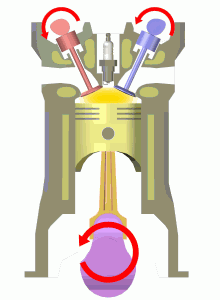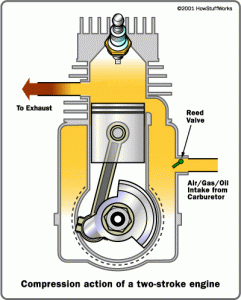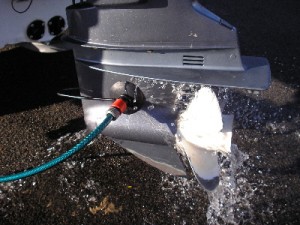Winterizing Your Boat: Part Three
 After you’ve flushed the system, use a pickup hose to pump some antifreeze through the manifold. This will require you to gain access to the engine room, and while you’re there you’ll want to change the transmission fluid as well. Take out each of the spark plugs and spray some fogging oil into each cylinder. Finally, wipe down the entire engine with some fogging oil, WD-40 or other lubricant.
After you’ve flushed the system, use a pickup hose to pump some antifreeze through the manifold. This will require you to gain access to the engine room, and while you’re there you’ll want to change the transmission fluid as well. Take out each of the spark plugs and spray some fogging oil into each cylinder. Finally, wipe down the entire engine with some fogging oil, WD-40 or other lubricant.
Stern drives have a tendency to pick up barnacles and aquatic flora during the season, so you’ll want to remove any of these growths from the lower unit. Drain all of the fluid from the gear case and be sure there isn’t any excess moisture in the two cycle oil, which is an indication that your seals are leaking. Thoroughly clean the lower unit with soap and water, apply grease to the system and check all of the necessary fuel levels.












